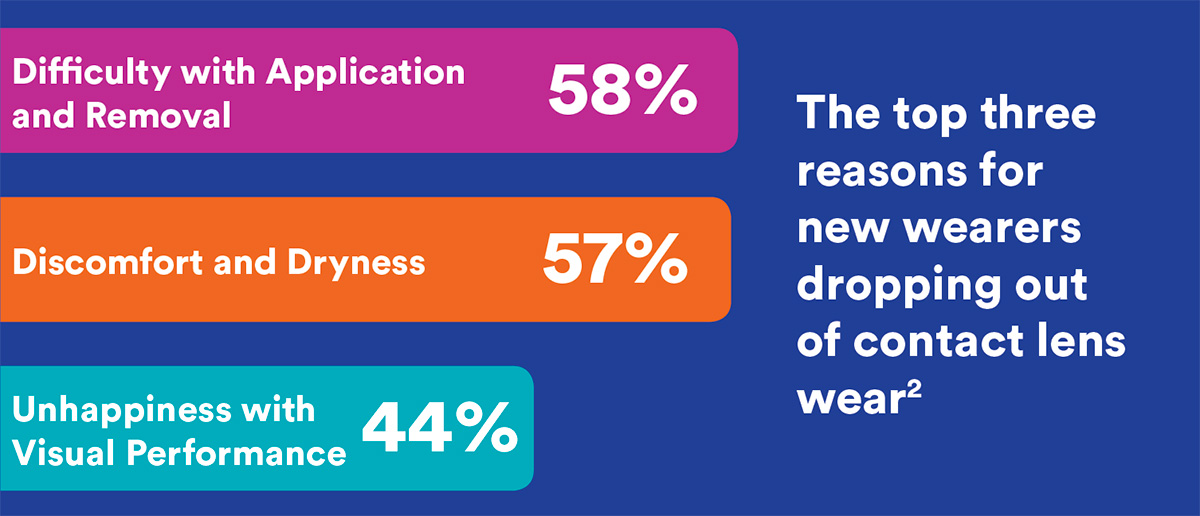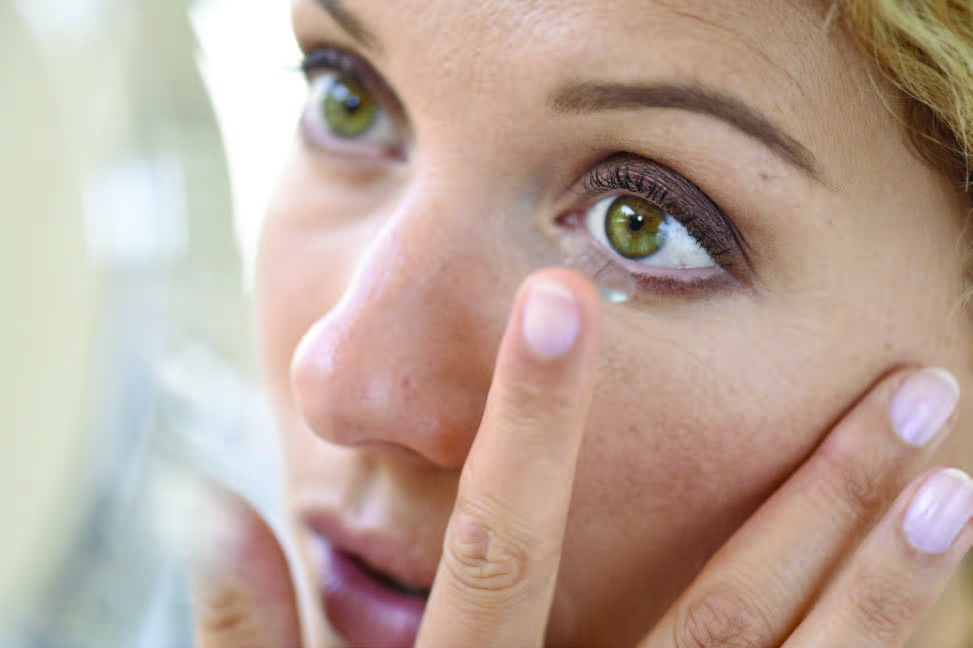By Clair Bulpin and Theresa Cox
Why talk to the new contact lens wearer
Embarking on the toughest part of the contact lens journey
Almost half of new wearers who drop out of contact lens wear do so in the first two months.1 By providing the right level of support during this critical period we are more likely to convert our trial into a long-term, happy and loyal contact lens wearer.

Early intervention is KEY
Modern materials, lens designs, modality ranges and prescription availability mean that many of the reasons for contact lens drop out can be addressed. This does however, rely on the patient reporting back any issues they are experiencing. By setting realistic expectations and advising the patient that changes can be made if necessary, they are more likely to relay their concerns rather than assuming that contact lenses are simply not for them. It pays to ensure that the patient understands that this first trial lens may not be their only option and reassurance at this stage that it is ‘ok’ to voice concerns could mean that the patient does not drop out of contact lens wear. Remember, they were motivated to trial them initially suggesting that they’d be willing to try others if they knew this was an option.
"There is simply not one lens for all, the aim of the trial is to see how this lens works for you. We are able to tailor recommendations on feedback to ensure that we find the perfect lens for you"
The 3 stages of the contact lens journey
Effective communication between patient, practitioner and practice team, alongside great support at each stage of the initial journey, can both help build a successful contact lens practice.

What to look and listen for
Use visual clues to help gauge level of support needed
Lens Handling Observation of patients’ reactions to you approaching their eye, holding lids and applying the lens may give an indication of likely success of the handling session. Discuss such observations in handover from ‘fitter’ to ‘teacher’.

Compliance
Appearance, personal hygiene and hand cleanliness may help guide you with compliance advice. Gaining agreement on a process requires an understanding of ‘why’ something is important. This can be key to ensuring compliance with lens care.
Watch out for the early signs of issues that may result in drop out if not tackled
- Vision issues
- This could be poor vision at distance/near or fluctuating vision particularly for your astigmatic patients.
- Discomfort/dryness issues
- Could be on application, towards end of the day or dependant on environmental factors.
- Handling issues
- Patients may not be wearing lenses as often as they would like due to the time taken to apply them.
- Annoyance of lens care procedures
- Cleaning procedures may be seen as a chore.
Continued positivity and a confidence that early issues can be addressed will seek to alleviate some concerns the patient may be experiencing.
First review
It is useful to allow the patient to speak first at the first review appointment. When you have built rapport and understand their motivation, it can be useful to begin conversations around these areas, establishing the positives that have so far come from their early lens wearing experiences. They will often volunteer the good and the bad during an open conversation. We can listen carefully for the niggles and assess the language they use to help advise appropriately. The patient may need some reassurance that this lens isn’t their only option - so it is better if they voice any concerns as this stage.
Ensure that you allow the patient to demonstrate their lens handling and lens care. You can therefore ensure that they are following the correct procedures and address any early poor habits.
Risk-taking propensity is another factor in non-compliance among contact lens wearers, and young males are among the groups at greater risk of contact lens-related infection.5
What to say and do
Provide support and on-going motivation to your patient
Flag up that some patients find the early stages challenging so if they do, they are not on their own. Discuss their motivation for wearing lenses – consider writing it on a sticky note on the bathroom mirror to serve as a reminder and motivator when times get tough.

Utilise your team
An approachable and well-trained team can make a huge difference in helping patients through the first month or so.
- Ensure all staff are familiar with early issues with handling, wear and care and when a further appointment may be necessary
- Ensure your team are positive advocates and able to encourage and empathise with your new wearers
- Consider the role of a contact lens buddy where support staff can make a follow up call to new wearers, provide reassurance and look out for the warning signs of potential dropout i.e. cancelled appointments, unreturned calls
Focus on lens handling - top tips
- Utilise staff who are wearers themselves – this personal perspective can really help build rapport
- Reassurance is key ‘practice makes perfect’
- Use analogies like learning to ride a bike to emphasise that everyone learns at different speeds
- Establish trust to be able to cope with anger, frustration, low confidence or emotion in those feeling overwhelmed on a personal level
- Create a calm , relaxed atmosphere and allow adequate time for the teach appointment so the patient does not feel rushed
- Regularly observe those that provide teach sessions to ensure all aspects are being covered
- Lead by example with regards to hygiene – ensure your contact lens teach area is clean, free of clutter and everything you need is to hand
- Keep hygiene simple - deliver the ‘dos and don’ts’ in small chunks

